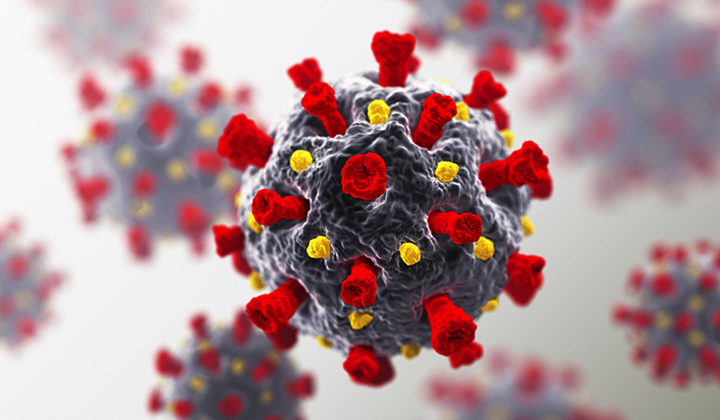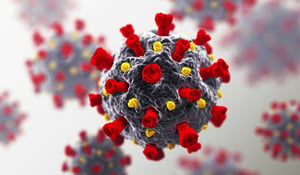Cytel's Response: EMA Points to consider on implications of COVID-19

Further regulatory guidance has been released concerning the implications of the Coronavirus disease (COVID-19) on clinical trials.
On March 25th the Biostatistics Working Party (BSWP) of the European Medicines Agency (EMA) Committee for Human Medicinal Products (CHMP) published a draft points to consider guidance document on the actions that sponsors of affected clinical trials should take to help ensure the integrity of their studies, and the interpretation of the study results, while safeguarding the safety of trial participants as a first priority.
In line with this guidance, the EMA state that they will be flexible and pragmatic during the assessment of affected clinical trial data submitted to the Agency as part of marketing authorisation applications.
The guidance starts with the note:
Due to the urgency, this guidance is issued with a 4-week public consultation. It should be noted that due to the rapidly evolving situation further updates to this guidance are possible and likely.
Contact a Consultant if you have any questions.
See previous blogs in the series:
- Link to Cytel’s initial response to EMA Guidance on the Management of Clinical Trials During the COVID-19 (Coronavirus) Pandemic.
- Link to Cytel’s initial response to FDA Guidance on Conduct of Clinical Trials during the COVID-19 Pandemic.
The table below provides a selection of key messages from the guidance along with some interpretations and recommendations.
Selected EMA Guidance
Interpretations and Recommendations
Who Needs to be Involved Now
It is foreseeable that the COVID-19 pandemic will interfere with the conduct of many ongoing trials, also with the collection, analysis and the interpretation of clinical trial data.
Sponsors are advised to pre-plan how systematic deviations resulting from the measures and individual decisions related to the COVID-19 pandemic are captured.
.
The impact of COVID-19 needs to be assessed with regards to all aspects related to statistical activities. This includes what data are being collected and how they are being collected, alongside subsequent statistical analysis and interpretation.
Involve the data management team who have the expertise in data collection methods. Analyses will need to be performed that take into account changes from the planned protocol and analysis plan. In order to be able to do this it is vital that such information is collected in a formal, documented manner, so that it is subsequently available for statistical analyses and the interpretation of results.
In collaboration with clinicians, the statistician should always be involved when evaluating what information needs to be collected and in which format, as they will need to use the information and understand the intricacies concerning the analyses and interpretation.
Data Collection
Data collection should preferably not stop and should continue as long as possible. However, potential risks for study participants when undergoing study-specific procedures, take priority in decisions taken by patients and health institutes.
Consider alternative endpoints for evaluation.
Evaluate the impact of modification on safety analyses.
Amend data management plans for new data and new data sources.
The measurement methods should be explained, assessed and reported in the clinical study report following ICH E3.
Consider design and analysis strategies and ways to handle potentially higher measurement variability and missing visits.
Interpretability of Study Results - Estimands and Sensitivity Analyses
- Measures taken in relation to the COVID-19 pandemic may interfere with study treatments.
- The external validity of trial outcomes may be affected by the presence of different trial populations.
- Such information [systematic deviations] will prove valuable in the assessment of the potential impact of these decisions on the trial outcome and should help distinguish between ‘affected’ and ‘unaffected’ data.
The ICH E9 (R1) addendum on estimands and sensitivity analysis in clinical trials describes various attributes regarding the treatment effects estimated in a trial. The guidance document highlights several of these that will now need further consideration. The statistician can help steer and explain such discussions:
- The treatment condition of interest
- The population of patients targeted by the clinical question
- Intercurrent events are events occurring after treatment initiation that affect either the interpretation or the existence of the measurements associated with the clinical question of interest. Strategies need to be selected to handle such intercurrent events.
Ongoing Analyses - Risk Assessments
Sponsors are advised to contemplate an analysis of the accumulating trial data in order to evaluate the implications on recruitment, loss of patients during the trial, ability to record data and ability to interpret the treatment effect in light of the pre-, during and post-pandemic measures phases
- Performed on aggregate and blinded data with the intent to inform the likelihood of the trial to deliver interpretable results, not with the usual intent to confirm the likelihood of the trial being successful.
- Such an analysis of the trial data is conducted by an independent Data Monitoring Committee (DMC), which may already exist for the trial. If not, an independent DMC should preferably be established. This will ensure that the Sponsor can preserve trial integrity as much as possible.
Document risk assessments on an on-going basis.
Consider blinded unplanned analyses, to predict the impact of COVID-19.
Blinded sample size re-estimation can be used to mitigate the risk of increased variability in locally vs centrally measured endpoints.
Use blinded forecasting techniques to predict delays to enrolment, and subsequent impact on trial timelines.
As far as possible, all modifications to the protocol and the statistical analysis plan should be documented prior to any unblinding of trial data.
Set-up and utilise independent DMCs. Make use of systems that allow for the dissemination of information within a secure environment in order to reduce potential for operational bias and protect data from inappropriate access.
Modifications to Planned Analyses
Potential follow-up considerations or advises of the DMC may include the following:
- Recommendations of additional measures when completing the trial after the pandemic (e.g. validation of outcomes that were measured differently);
- Additional analyses (to be included in the Statistical Analysis Plan) to investigate the impact of the three phases (pre, during, and post COVID-19) to understand the treatment effect as estimated in the trial;
- Proposals to deal with any identified potential sources of bias such as missing values, newly identified intercurrent events or other unforeseeable required changes to trial elements.
Small-sample comparison experiments may provide efficient means to reduce bias.
External data sources e.g. large safety databases, can support the interpretation of the effect of the COVID-19 phases on safety profiles as seen in smaller trials.
External data or extra data collected digitally from trial participants can be considered as time-varying covariates
Consider stratification strategies based on blinded analysis of the trial populations to account for recruitment bias due to COVID-19.
The statistical analysis section of the protocol and/or the statistical analysis plan may need updating based on the findings from the analyses of the accumulating trial data. The DMC should include expert statisticians who can advise on such recommended changes.
Safety (for example adverse event) analyses as well as efficacy analyses may need to be stratified by pre-, during and post COVID-19.
Interim Analyses & Adaptations
Emphasis is put on the purpose of the analysis discussed here, which is risk assessment and to advise on follow-up actions; and not to perform an unplanned formal interim analysis for efficacy.
As a general principle, there are strong scientific reasons to conduct trials as planned and implement changes only when there is a convincing scientific reason that it improves interpretability of results.
Potential follow-up considerations or advises of the DMC may include the need to adjust the trial sample size.
Unplanned formal interim analysis for efficacy would come with all well-known concerns and associated precautions.
The current situation should not automatically encourage unplanned interim or early analyses.
There may be situations, however, where an unplanned (or early) analysis should be considered to minimize the effect of COVID-19 on the interpretation of the data at the risk of having lower power than as originally planned. These include situations where:
- The trial is close to completion.
- A planned interim analysis is due in the near future.
- The trial needs long term follow-up to observe the primary outcome, especially in cases where enrollment of the trials will be slowing down or even paused during the pandemic.
- The benefits (efficacy) and/or risks (safety events) to patients participating in the trial are affected by exposure to COVID-19. This could be especially important when assessment of efficacy may be impacted by co-administered therapies/interventions or in the presence of confounding co-morbidities.
- For multi-arm trials adding futility analysis can be beneficial so that ineffective treatments can be dropped and sample size can be reallocated to the promising treatments
Interim analysis could also:
- Evaluate the predictive probability of success and whether the trial should be stopped early rather than modified or prolonged.
- Assess whether a sample size modification (based on blinded or unblinded data) would increase the likelihood of success.
Any interim analysis needs to preserve the integrity of the study, for example with regards to the type I error rate. Statisticians who are experienced in adaptive design and analysis methodology should be involved.
Regulatory Interactions
BSWP would encourage Sponsors to take these points into consideration and to seek Scientific Advice on these matters early in the process.
Prepare for highly efficient regulatory interactions due to the expected high demand and involve regulatory experts and statisticians from the beginning.

Link to the full EMA Guidance.
Link to EMA/CHMP points to consider guidence document
Contact a Consultant if you have any questions.

